#Pilvi Takala
Explore tagged Tumblr posts
Photo
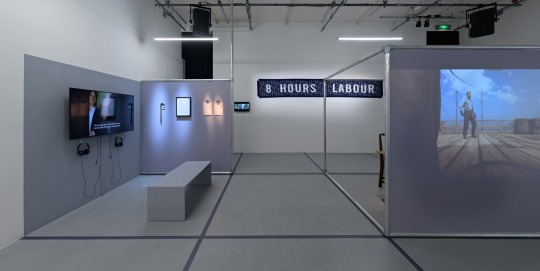
OUT OF OFFICE. This isn’t working for us Our schedules are packed. We define ourselves by our work. And we are constantly exhausted. The excesses of today’s technology-driven work culture are familiar to everyone – efficiency has become the norm and permanent availability a given. From 10 February till 10 April 2023, the IMPAKT Exhibition Out of Office presents a collection of artistic […] The post OUT OF OFFICE. This isn’t working for us appeared first on BLOK MAGAZINE. https://blokmagazine.com/out-of-office-this-isnt-working-for-us/
#Eyewitness#Netherlands#996.icu#Adrian Melis#Alina Lupu#Art Goss#IMPAKT CENTRE FOR MEDIA CULTURE#Marijn Bril#Mario Santamaría#Pieter Kers#Pilvi Takala#Sam Meech#Total Refusal#Tytus Szabelski#Zalán Szakács#Vera Zalutskaya#BLOK MAGAZINE
0 notes
Text
14/10/2024
Over de presentaties van de hoofdstukken die we gaven vanuit het boek Holding Space van Aminata Cairo:
De kracht van theorie en praktijk: moed uit een doosje halen / gezamenlijk luisteren en ervaren.
Power of silence : plek innemen door stil te zijn. Verschil tussen mensen die snel denken en mensen die tijd nodig hebben. Ruimte laten voor elkaar.
Over Social Design van Olga Potters
Kwalitatief onderzoek / Op een systematische manier bekijken
Onderzoek dat zich richt op onderwerpen die te maken hebben met de wijze waarom mensen betekenis geven aan sociale omgeving. En hoe ze zich daarvan gedragen. Het perspectief en ervaring van de onderzochten mensen is van belang.
Naturalistisch / Interpretatief / Begrijpen wat er speelt / Rijke data / Actie van het onderzoek
Je onderzoekt met de praktijk! Combinatie van onderzoeken en veranderingen aanbrengen/proberen. Doel = kennis ontwikkelen en iets veranderen.
Acties:
Kennis ontwikkelen, leren en veranderen
Participatief - je veranderd samen iets
Cyclisch (plannen, uitvoeren, interpreteren reflecteren en vastleggen en delen - het is niet liniaal, het zijn cirkels
Aandacht voor context - wat is er omheen
Reflextief
Hanah arendt - schrijft over actie en handeling, fylosofische deel van actie uitvoeren
Chaostheorie - vlinder vleugels die een orkaan veroorzaken.
(Je kan het niet isoleren ) side specific
In situatie EN METmensen
Functies vanuit boek maakkracht:
De waakhond: agendeert - aankaarten (kan op ludieke wijze)
De schatgraver: onderzoekt, brengt het in kaart, ontregeld
(Zoek op : the trainee pilvi takala)
De verkenner: leid de weg, faciliteert
De initiator: doet een voorstel
(Zoek op: Renzo Martens)
De waarmaker: creëert ruimte voor de nieuwe omgang met het vraagstuk
0 notes
Text
2022 Venice Art Biennale #1
We ventured out to Venice, Italy, this time!
Pre-opening days are April 20, 21, 22 and this year's biennale was curated by Cecilia Alemani (Italian curator of the High Line in NYC).
2022 Venice Art Biennale: The Milk of Dreams
April 23 - November 27, 2022
SESTIERE CASTELLO 30122 VENICE
giardini
SESTIERE CASTELLO CAMPO DELLA TANA 2169/F30122 VENICE
arsenale
Names of the artists whom we are familiar in NYC:
Ruth Asawa
Noah Davis
Barbara Kruger
Francis Alÿs
Stan Douglas
Marlene Dumas
Highlights below:

switzerland, latifa echakhch

japan, dumb type

nice fashion

japanese government discussing their visit to the vatican and what they did with japanese christians in the past...

japanese artist

great britain

inside the great britain, sonia boyce

estonia, kristina norman n bita ravazi

francis alÿs
https://francisalys.com

finland, pilvi takala

usa, simone leigh: sovereignty

usa, simone leigh: sovereignty

ruth asawa

reported by Nozomi Kato 2022
0 notes
Text

Pilvi Takala - The Real Snow White
The absurd logic of the ‘real character’ and the extreme discipline of Disneyland become apparent when a real fan of Disney's Snow White* is banned from entering the park in a Snow White costume. As visitors are encouraged to dress up and a lot of costume-like merchandise is sold at the park, the full costumes are only sold for children. The Disney slogan ‘Dreams Come True’ of course means dreams produced exclusively by Disney. Anything even slightly out of control immediately evokes fear of these real, possibly dark and perverse dreams coming true. The fantasy of the innocent Snow White doing something bad is so obviously real, that the security guards and management refer to it when explaining why the visitor can’t enter the park dressed up as Snow White.
1 note
·
View note
Text
Paris. It’s hot. Water-bottle season. Most of the visitors are in groups. The woman has come alone. She’s in a basque-waisted gown with a corn-silk-colored skirt, a midnight-blue bodice, puffed sleeves with Vatican Swiss Guard-style stripes, and an apple-red cloak. She has black curls, tied up in a satin bow. She’s even wearing some kind of ruff, as stiff as a dog’s cone. People take her to be Snow White and start asking her to sign autographs and pose for pictures.
This lasts for less than two and a half minutes. A security guard charges over and pulls the Snow White look-alike to the side.
“It’s not possible to enter in this kind of clothes,” he says.
“Really?” she replies.
“You will have to change and put something else on.”
The Snow White look-alike is polite, demure even, but she doesn’t capitulate easily.
“It’s Disneyland, right?”
The guard has trouble articulating exactly what provision of amusement-park law the woman has violated. He is obviously acting on orders from superiors, but his confusion is ontological more than administrative. We are worried that you might do bad things, he says. People might think you’re the real character, you know?
He speaks into a walkie-talkie. It’s unclear what code he might be using to signal the problem, where the invisible line lies between an innocent bit of flair and a public threat. If Mickey Mouse ears are allowed, why not a Snow White dress? A little girl in a nearly identical outfit is standing nearby, but the guard pays her no mind.
Another guard has joined the negotiations. The problem, apparently, is that the Snow White look-alike resembles too closely the “real” Snow White.
//
“Her most powerful tool is awkwardness.”
//
This is one of my favorite performance pieces of all time -
“The Trainee” (2008) is probably Takala’s best-known work. To create it, she spent a month in the Helsinki office of Deloitte, the multinational consulting firm. Only a few higher-ups knew her real identity…To her co-workers, she was Johanna Takala, a twentysomething intern in the marketing department. At first, she seemed unremarkable enough. Soon, however, they realized that she wasn’t contributing much to the team. It wasn’t that she was taking too many smoke breaks or browsing Facebook on company time. Far worse: she just sat there all day, staring into the distance. Anyone who dared inquire what she was up to was met with unnerving diffidence: “Brain work.”
One day, she rode the elevator up and down for hours. A few of her co-workers were amused (“Well, at least you’re cheering up our day!” one man said), but others simply could not take the strangeness.
0 notes
Text
The Trainee:
This is a piece by Pilvi Takala, a Finnish performance artist known for videos where she threatens social norms with simple actions. Here, she takes on the way our social order is oriented on certain ideas about productivity:
vimeo
The Trainee is produced in collaboration with international accounting firm Deloitte. In order to realise the project, the artist worked for a month as trainee in the marketing department of Deloitte, where only a few people knew the true nature of the project.
During the month-long intervention, an initially normal-seeming marketing trainee starts to apply peculiar working methods. Gradually she shifts from the position of someone others believe to be normal, to the object of avoidance and speculation. The videos and slideshow reveal a spectrum of ways of handling the odd member in a group. Sincere interest and bewildered amusement are juxtaposed with demands directed at the superior regarding the strangely behaving worker.
We see the trainee sitting at her workstation in the consultants' open-plan office space, or in the tax department library all day doing nothing. One of the videos shows her spending an entire day in an elevator. These acts or rather the absence of visible action slowly make the atmosphere around the trainee unbearable, forcing the colleagues to search for solutions and to come up with explanations for the situation.
Masking laziness in apparent activity and browsing Facebook during working hours belong to the acceptable behavioural patterns of a work community. However, sitting in front of an empty desk with your hands of your lap, just thinking, threatens the peace of the community and breaks the colleagues’ concentration. When there is no ready method of action, people initially resort to avoidance, which fails to set their mind at ease if the situation drags on.
What provokes people about this ‘non-doing’, aside from the strangeness, is the element of resistance. The non-doing person isn’t committed to any activity, so they have the potential for anything. It is non-doing that lacks a place in the general order of things, and thus it is a threat to order. It is easy to root out any ongoing anti-order activity, but the potential for anything is a continual stimulus without a solution.
#pilvi takala#the trainee#attention economy#productivity#social construct#social experiment#installation art#art exhibition#performance art#jenny odell#deloitte#slow living#thinking#thoughtcrime#thinking is dangerous#subversive art#subversion#daily art
2 notes
·
View notes
Photo

Pilvi Takala at Carlos/Ishikawa
19 notes
·
View notes
Photo
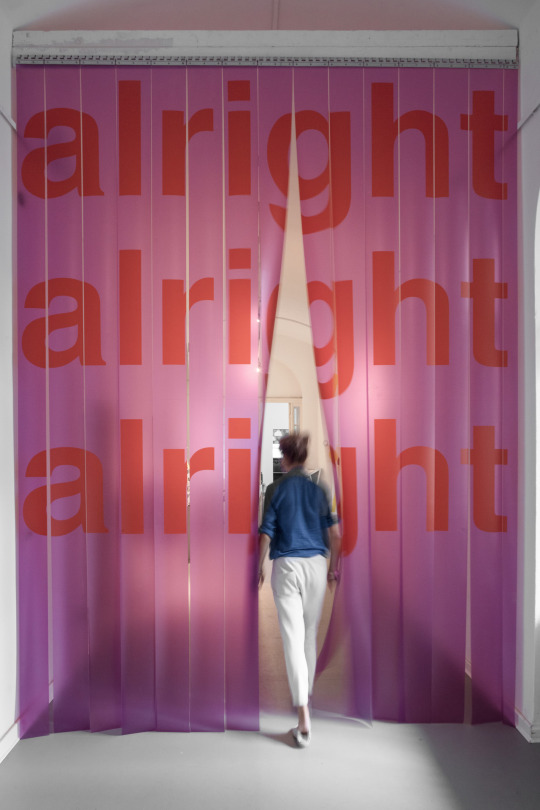
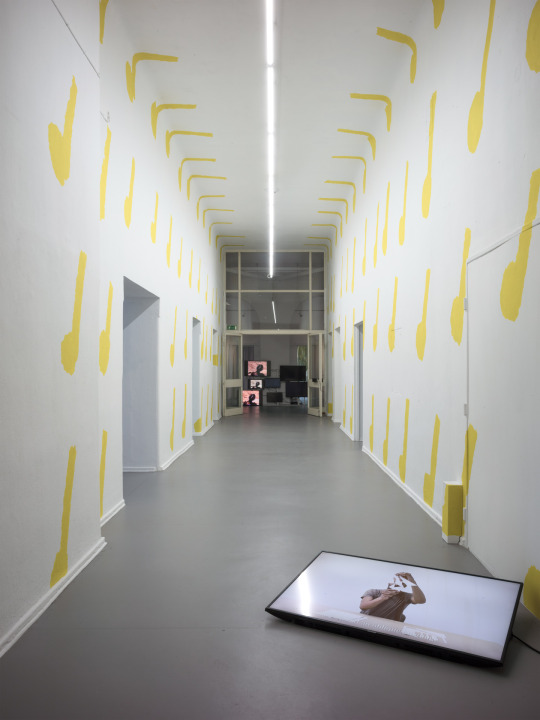

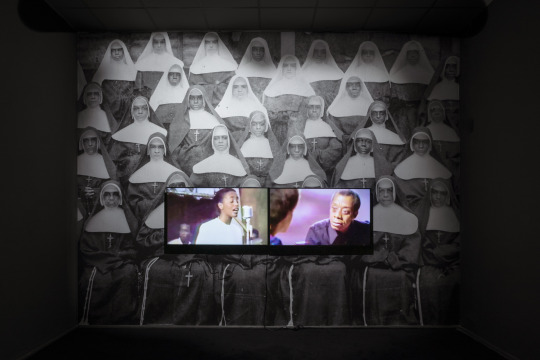
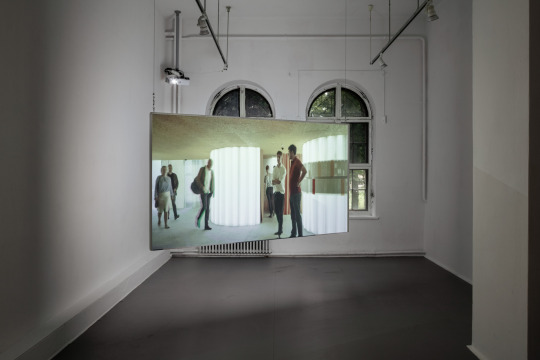
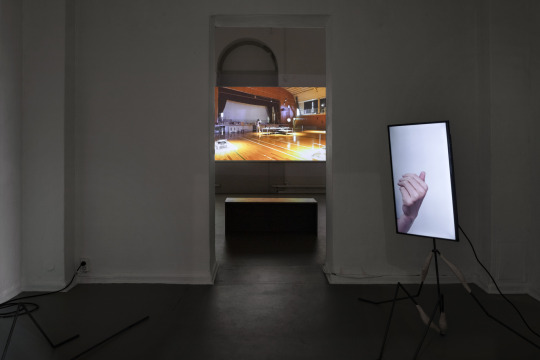


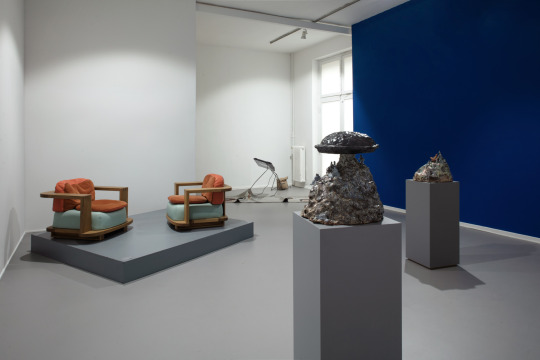
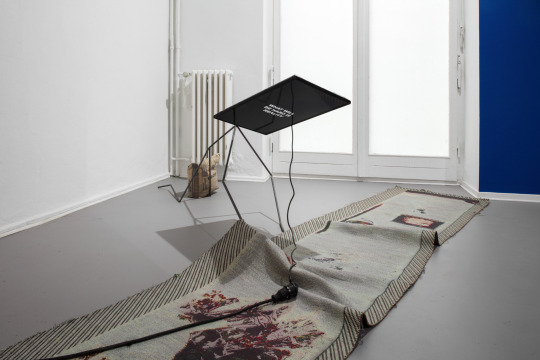
Wild Frictions
The Politics and Poetics of Interruption
June 26 – August 22, 2021
Wild Frictions: The Politics and Poetics of Interruption explores minor disruptions, surprising and unforeseen interventions, delays and repetitions and their potential to show alternative ways of existing and behaving. Rather than looking to heroic eloquent figures or stimulating united/ collective moments, this exhibition locates emancipation in subtle idiosyncratic forms of mischief-making, in the playful slippages or in the spaces in between sounds and syllables.
“…wildness as a provocation, a retreat from the conventional, an affront to the normal and the expected, and an environmental condition.” (Jack Halberstam, Wild Things: The Disorder of Desire , 2020, p. 28)
The subversive artistic approaches/ actions/ acts simultaneously evoke feelings of alienation and loss of control, which in turn reflect anxieties and tensions associated with the pandemic and social uprisings of the past and this year – the personal gridlock, the numerous protests and repeated quarantines, as well as economic and social pauses. Through text, video, sound, installation, and performance, the artists of Wild Frictions employ strategies of interruption and blockage/ obstruction/ resistance to critique universal narratives, systems of oppression, and unconscious structural routines that characterize our everyday lives.
„Gesucht: die Lücke im Ablauf, das Andre in der Wiederkehr des Gleichen, das Stottern im sprachlosen Text, das Loch in der Ewigkeit, der vielleicht erlösende Fehler.“ (Heiner Müller, Shakespeare‘s Factory 1 , 1985, S. 13)
These disruptive artistic gestures may create discomfort or confusion, but simultaneously/ and therefore contain an immense potential: the ability to subvert and gently corrupt, to create cracks at the level of meaning and to open up new realities. Wild Frictions invites a poetic analysis and possible transgression of the boundaries that form universal modes of being, speaking and knowing today.
“When the facts change, I change my mind.” (Nora Turato, from the series “I’m on the verge of TOTAL VICTORY”, 2021)
Participating artists: Félicia Atkinson, Trisha Baga, Cameron Downey, Anna Ehrenstein, Nikita Gale, keyon gaskin, Birgit Hein, Steffani Jemison, Kahlil Joseph, Ani Kasten, Christine Sun Kim, Janette Laverrière, Ouecha, Laure Prouvost, Lili Reynaud-Dewar, Jimmy Robert, Pilvi Takala, Banu Çiçek Tülü, Nora Turato
Curators: Sandra Teitge and Amara Antilla Research and text editing: Linnéa Meiners, Jorinde Splettstößer Project management: Sofia Pfister Technical production: Kristoffer Holmelund Assistance: Dani Hasrouni, Markus Hemann Design: Louise Borinski
Kunstraum Kreuzberg/ Bethanien is an institution of the Friedrichshain-Kreuzberg District Council. Director: Stéphane Bauer
–The project is funded by the Capital Cultural Fund and the Senate Department for Culture and Europe: the Fund for Municipal Galleries, and the Fund for Exhibition Payments for Visual Artists. –Wild Frictions is produced in collaboration with the Contemporary Arts Center Cincinnati, where an iteration of the exhibition is on view April 9-September 19, 2021.
7 notes
·
View notes
Link
0 notes
Photo

Cartoon Imagery in Art 31.07.2014
The focus of this edition of Art Talks London was the use of cartoon imagery in the practices of artists. Speaking at this event we had Pilvi Takala, an artist and recipient of 2013 Emdash Award and Julia Crabtree & William Evans, artist duo recipients of 2014 Nina Steward Artist Residency.
Pilvi Takala - Graduated with MFA degree from the Finnish Academy of Fine Arts and also studied in Glasgow School of Arts. Takala is known for her video works that investigate different social situations and human behaviour. These narrative works are based on site-specific performances and interventions.
http://pilvitakala.com
Julia Crabtree and William Evans - have worked collaboratively for over ten years and see their practice as an ongoing experiment in shared subjectivity. Their work references the high artifice of B-movies and the spatial logic of cartoon physics as part of an ongoing investigation into the imagery of our collective conscious. Their work is rooted in sculpture, used as material across installation, video, print and performance, subjecting forms and figures to varying stages of virtual and material transformation.
http://www.crabtreeandevans.co.uk
Image Credit : Pilvi Takala, Real Snow White, 2009, video, 9:15 min, Courtesy of Carlos/Ishikawa
#julia crabtree & william evans#pilvi takala#south london gallery#fatos ustek#snowwhite#disney#disneyland#art#artworld#culture#shoreditch house#soho house#curator#artist
1 note
·
View note
Link
By collecting stories of people who have resisted productivity, a chapter called “Anatomy of a Refusal” explains in greater detail how such different forms of “nothing” can reinforce each other. For a performance piece called The Trainee, the Finnish artist Pilvi Takala took a job at Deloitte just to stare into space at her empty desk and take the elevator up and down—to the consternation of her “coworkers.” The ancient philosopher (and proto–performance artist) Diogenes, famous for living in a tub, enacted a similar “aesthetics of reversal,” walking backward down the street, hugging statues covered with snow, and rolling over hot sand in the summer. By “refusing or subverting an unspoken custom,” Odell writes, people like Takala and Diogenes reveal its “often-fragile contours.” Custom, for a moment, “is shown to be not the horizon of possibility, but rather a tiny island in a sea of unexamined alternatives.” Odell’s great strength as a writer is her ability to convey art’s unique power without overestimating or misstating its social impact. Here, Takala and Diogenes are one step on the continuum of refusal, dependent on other steps for real material change. She devotes much of the rest of the chapter to civil disobedience and organized labor resistance.
Resisting or refusing current conditions is one way to “do nothing.” Paying attention to them is another. In “Ecology of Strangers,” Odell proposes bioregionalism as one model of “unproductive” existence. Rooted in the appreciation of interdependence among humans, plants, and animals, bioregionalism calls for “observation and recognition of what grows where.” Such careful observation can change your sense of the world, delivering you to a new reality. Throughout the book, Odell enumerates the many ways this can happen. After experiencing a live performance of a John Cage composition in which the orchestra “plays” everyday objects like a typewriter, a set of cards, and a blender, Odell steps outside and notices, as if for the first time, the distinct sounds of “the cars, the footsteps, the wind, the electric buses.”
She thinks corporate social media platforms keep us from these types of noticing. Whereas her increasing acuity as a birder grows out of the attention she pays to the times and places birds appear, her Facebook and Twitter feeds move her mind in the opposite direction. They distance information from its spatial and temporal contexts, she argues, producing “not understanding but a dull and stupefying dread.” Her case occasionally comes off as dogmatic. You could argue, for counterexample, that Twitter creates temporal contexts as much as it erases them; think of the real-time collective responses it engenders to any major event. But it’s hard to argue that it’s not also, often, dulling and stupefying. And, ultimately, Odell proposes not deleting our accounts but using the social media we have more thoughtfully while building alternatives that help ground us in our communities.
Searching for a word to describe the form Odell’s chapters take, I first typed thicket. Actually, they are more like the Rose Garden. Throughout, she samples frequently and generously from poetry, philosophy, biography, fiction, nature writing, and art. And she has tended this work carefully, shaping it into branching conceptual paths that frequently crisscross one another. Meandering down them, you don’t so much follow an argument as experience a sense of interconnectedness. You don’t know quite where you’re heading, but you’re happy to look around.
2 notes
·
View notes
Link
vibes
0 notes
Text
TUT1
- “The Real Snow White” pilvi takala
- costume bias
- diverse
- the villains, who are they
- lost characters
- find sth specific, potentials
- background characters
- same background in many movies
- background changes in different cultures
- races of the characters
- critique
- design potential with cut of human torso parts presented
- respects with the dead
- animals cannot give consent, humans can
- bones? ceremony
- organ donations/ wasted organs
- RCA, grows in lab, mutation
0 notes
Photo

Last - but not least – screening for today, “The Machine Man and Ectasy”, in presence of Freja Sofie Kirk, Pilvi Takala, Thomas Taube and Jan Locus, now streaming live on our website! Join us to interrogate the relations between bodies and society, organisms and environment… Watch live 📽 http://art-action.org/live
0 notes
